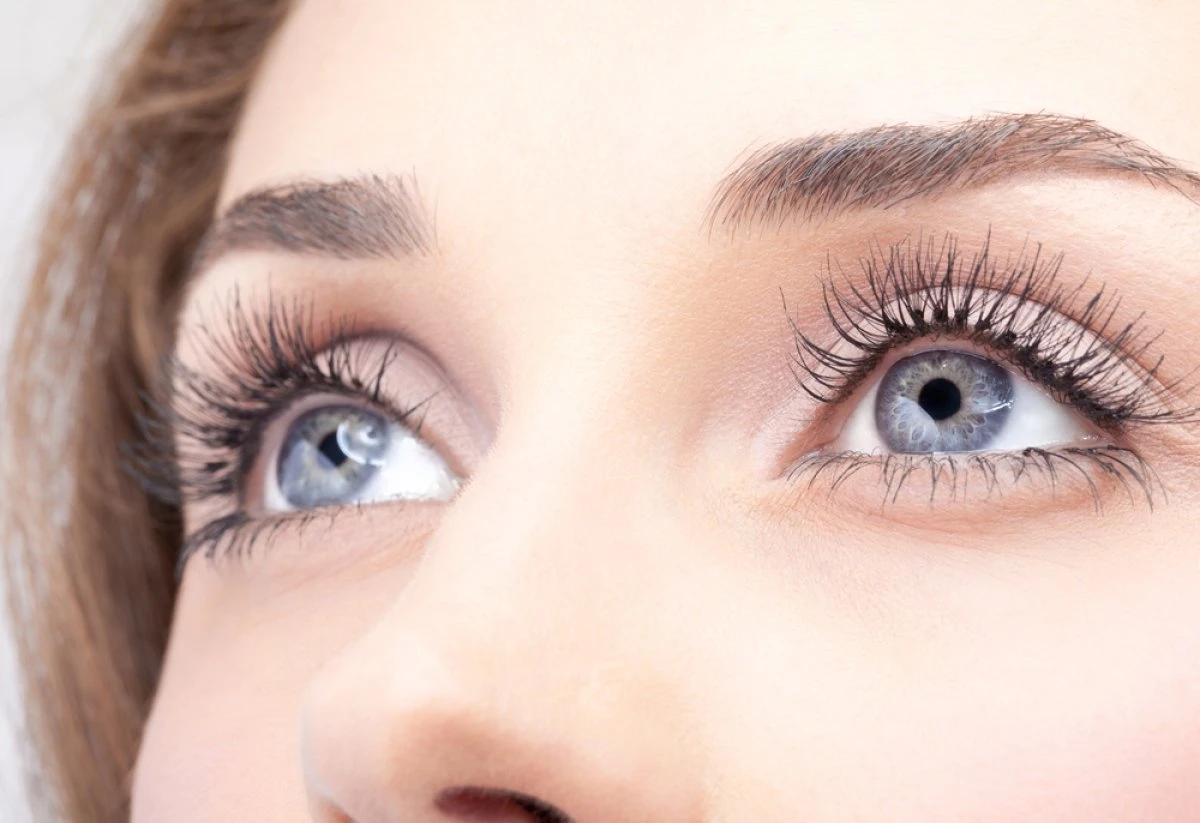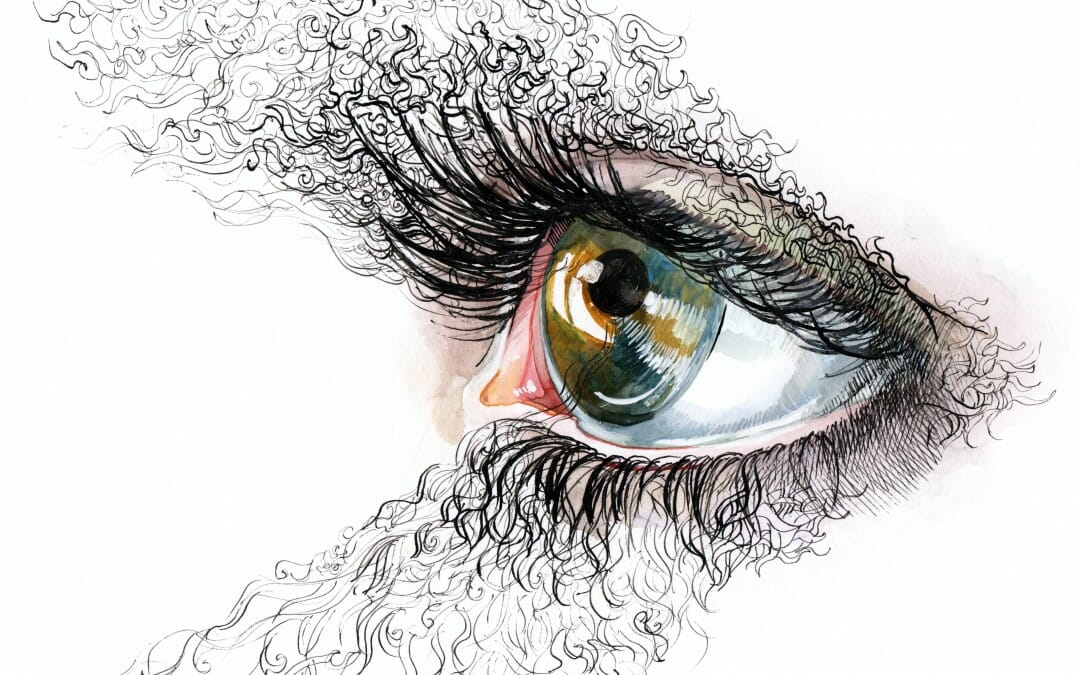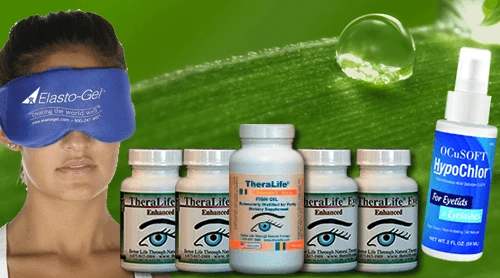What is crusty eyes
A common condition that causes crusty eyes or eyelids is blepharitis – inflammation of the eyelids. Blepharitis causes your eyelids to stick together in the morning. To get rid of crusty eyes, you must also treat your dry eyes – the underlying cause of crusty eyes. Proper eyelid hygiene can help limit this condition.
TheraLife has a three-fold approach to get rid of crusty eyes.
Blepharitis – the infection of the eyelids can cause dry eyes. Dry eyes can also cause blepharitis. We can treat both of these conditions successfully. However, for full recovery – treatment of both the eyelid infection and the dry eyes and clogged meibomian gland must happen simultaneously.
TheraLife has a three-fold approach to cure blepharitis completely. Note that there is no cure for dry eyes. Therefore, you must maintain and provide relief for dry eyes daily.
To learn more, click here.
Structure of the Eye.
The structure of the eye is complex. When one of these structures is not working correctly, it can impair vision.
- Iris: the colored part of the eye
- Pupil: a dark circle in the middle of the iris that changes the amount of light allowed into the eye
- Retina: the very back of the eye that senses light
- Cornea: the clear tissue located in the front of the eye
- Lens: a small clear disk directly behind the iris and pupil that allows light into the retina
What causes crusty eyes (blepharitis)
Blepharitis is an inflammation of the eyelids. Eyelids protect the cornea from a foreign substance, injury, or infection, and the meibomian gland will secrete a liquid full of lubricants and proteins to the eyelid.
Blepharitis is an infection that might clog the gland that secretes the fluid to the cornea.
What causes clogged oil glands (MGD)?
At the root of every eyelash is an opening where tiny oil glands called meibomian glands.
In most cases, inflammation causes blepharitis of the meibomian glands of the eyelids. The base of each eyelash is the oil gland. Inflammation of this area can cause irritation and itching. If the meibomian gland becomes clogged and cannot release lubricants onto the eye to keep it moist, dry eyes occur.
Allergic reactions to makeup, hairspray, animals, chemicals, or airborne allergens are some of the culprits that can lead to blepharitis. Bacterial infections such as Staphylococci or even head lice (mites) can cause an inflammation of the eyelids.
Symptoms and signs of blepharitis (crusty eyes)?
Blepharitis usually occurs in both eyes and affects both the upper and lower lids.
Some of the symptoms a person may feel include:
- Sensitivity to light
- Dry eyes
- Itchy or irritated eyelids
- A feeling that grit or sand is in the eye
- Foreign body sensation
- Crusty eyes in the morning
- Swollen eyelids
- Flaking of skin around the eyelid area
- Loss of eyelashes
- Dandruff like patches on the lashes and eyebrows
- Bubbly or frothy tears
- Burning sensation
Recurrent conjunctivitis or “dry eye” are the common symptoms associated with both. Eye drops that lubricate the top layer of the cornea do little to improve blepharitis treatment or cure the condition.
How is crusty eyes diagnosed?
After a close examination of the eyelids and a whole questioning of symptoms, an eye doctor will evaluate the lid margins, oil gland openings, tear quality and quantity, and the base of the eyelashes.
Sometimes, cultures are taken of the discharge and sent to the laboratory for further examination. If allergies are suspected, an allergy evaluation may also be needed.
Is it possible to prevent blepharitis?
Good eyelid hygiene routines can control blepharitis. Unfortunately, blepharitis prevention is not curable because the factors that create blepharitis can vary. However, understanding what causes blepharitis and avoiding agents that may trigger an episode is valuable in prevention.
How can I treat blepharitis, crusty eyes?
In cases of chronic blepharitis, treating dry eyes and the meibomian gland can prevent and achieve full recovery.
TheraLife has a complete solution to your dry eye problems for crusty eyes relief.
Good hygiene is the single most important blepharitis home remedy for the natural treatment for blepharitis. For example, to soften debris and oils on the lid, apply a warm wet compress to the eyes for five to ten minutes a couple of times a day.
After the warm compress loosens up the debris, clean the eyelids with a cotton ball or cotton swab with an over-the-counter cleanser for the eyes.
We highly recommend Avenova eyelid cleanser. It is gentle and builds up a biofilm layer to prevent bacteria from the re-attaching back onto your eyelids. Do not wash Avenova off after cleansing. –
Next, if you wear makeup, remove all eye makeup daily. If possible, limit or stop the use of makeup on the eyes altogether. If this is not possible, switching from contact lenses to glasses temporarily can help.
The key to successful treatment is to keep the lids clean and free of dirt or other irritants.
Topical or oral medicines to fight the bacteria can be effective. Once the offending agent is identified, it becomes easier to avoid the irritant. Treatment becomes more successful. Adding omega-3 fatty acids, intense light treatment on the glands, and even thermal lid massage have had some success.
Finally, adding TheraLife eye capsules to treat blepharitis and dry eyes is a must! By promoting the production of your tears, natural dry eye relief is possible.
End dry eye pain and discomfort by getting to the root of the problem – treatment from inside. TheraLife can assist you in cutting your dependence on eye drops while restoring your vision. End your eye pain today with TheraLife!
References
1.Huggins AB, Carrasco JR, Eagle RC. MEN 2B masquerading as chronic blepharitis and euryblepharon. Orbit. 2019 Dec;38(6):514-518.
2.Rodriguez-Garcia A, Loya-Garcia D, Hernandez-Quintela E, Navas A. Risk factors for ocular surface damage in Mexican patients with dry eye disease: a population-based study. Clin Ophthalmol. 2019;13:53-62.
3.Choi FD, Juhasz MLW, Atanaskova Mesinkovska N. Topical ketoconazole: a systematic review of current dermatological applications and future developments. J Dermatolog Treat. 2019 Dec;30(8):760-771.
4.Ozkan J, Willcox MD. The Ocular Microbiome: Molecular Characterisation of a Unique and Low Microbial Environment. Curr Eye Res. 2019 Jul;44(7):685-694. ]
5.Khoo P, Ooi KG, Watson S. Effectiveness of pharmaceutical interventions for meibomian gland dysfunction: An evidence-based review of clinical trials. Clin Exp Ophthalmol. 2019 Jul;47(5):658-668.
- Soh Qin R, Tong Hak Tien L. Healthcare delivery in meibomian gland dysfunction and blepharitis. Ocul Surf. 2019 Apr;17(2):176-178.
7.Fromstein SR, Harthan JS, Patel J, Opitz DL. Demodex blepharitis: clinical perspectives. Clin Optom (Auckl). 2018;10:57-63.
8.Pflugfelder SC, Karpecki PM, Perez VL. Treatment of blepharitis: recent clinical trials. Ocul Surf. 2014 Oct;12(4):273-84.
9.Kanda Y, Kayama T, Okamoto S, Hashimoto M, Ishida C, Yanai T, Fukumoto M, Kunihiro E. Post-marketing surveillance of levofloxacin 0.5% ophthalmic solution for external ocular infections. Drugs R D. 2012 Dec 01;12(4):177-85.
10.Veldman P, Colby K. Current evidence for topical azithromycin 1% ophthalmic solution in the treatment of blepharitis and blepharitis-associated ocular dryness. Int Ophthalmol Clin. 2011 Fall;51(4):43-52.
11.Hosseini K, Bourque LB, Hays RD. Development and evaluation of a measure of patient-reported symptoms of Blepharitis. Health Qual Life Outcomes. 2018 Jan 11;16(1):11.
- Craig JP, Nichols KK, Akpek EK, Caffery B, Dua HS, Joo CK, Liu Z, Nelson JD, Nichols JJ, Tsubota K, Stapleton F. TFOS DEWS II Definition and Classification Report. Ocul Surf. 2017 Jul;15(3):276-283. [PubMed]
- King-Smith PE, Fink BA, Hill RM, Koelling KW, Tiffany JM. The thickness of the tear film. Curr Eye Res. 2004 Oct-Nov;29(4-5):357-68.
- King-Smith PE, Fink BA, Fogt N, Nichols KK, Hill RM, Wilson GS. The thickness of the human precorneal tear film: evidence from reflection spectra. Invest Ophthalmol Vis Sci. 2000 Oct;41(11):3348-59.
- Chen Q, Wang J, Tao A, Shen M, Jiao S, Lu F. Ultrahigh-resolution measurement by optical coherence tomography of dynamic tear film changes on contact lenses. Invest Ophthalmol Vis Sci. 2010 Apr;51(4):1988-93.
- Willcox MDP, Argüeso P, Georgiev GA, Holopainen JM, Laurie GW, Millar TJ, Papas EB, Rolland JP, Schmidt TA, Stahl U, Suarez T, Subbaraman LN, Uçakhan OÖ, Jones L. TFOS DEWS II Tear Film Report. Ocul Surf. 2017 Jul;15(3):366-403.
- O’Neil EC, Henderson M, Massaro-Giordano M, Bunya VY. Advances in dry eye disease treatment. Curr Opin Ophthalmol. 2019 May;30(3):166-178.
- Stapleton F, Alves M, Bunya VY, Jalbert I, Lekhanont K, Malet F, Na KS, Schaumberg D, Uchino M, Vehof J, Viso E, Vitale S, Jones L. TFOS DEWS II Epidemiology Report. Ocul Surf. 2017 Jul;15(3):334-365.
- Bron AJ, de Paiva CS, Chauhan SK, Bonini S, Gabison EE, Jain S, Knop E, Markoulli M, Ogawa Y, Perez V, Uchino Y, Yokoi N, Zoukhri D, Sullivan DA. TFOS DEWS II pathophysiology report. Ocul Surf. 2017 Jul;15(3):438-510.
- Wolffsohn JS, Arita R, Chalmers R, Djalilian A, Dogru M, Dumbleton K, Gupta PK, Karpecki P, Lazreg S, Pult H, Sullivan BD, Tomlinson A, Tong L, Villani E, Yoon KC, Jones L, Craig JP. TFOS DEWS II Diagnostic Methodology report. Ocul Surf. 2017 Jul;15(3):539-574.
- Nichols KK, Mitchell GL, Zadnik K. The repeatability of clinical measurements of dry eye. Cornea. 2004 Apr;23(3):272-85.
- Whitcher JP, Shiboski CH, Shiboski SC, Heidenreich AM, Kitagawa K, Zhang S, Hamann S, Larkin G, McNamara NA, Greenspan JS, Daniels TE., Sjögren’s International Collaborative Clinical Alliance Research Groups. A simplified quantitative method for assessing keratoconjunctivitis sicca from the Sjögren’s Syndrome International Registry. Am J Ophthalmol. 2010 Mar;149(3):405-15.
- Bron AJ, Evans VE, Smith JA. Grading of corneal and conjunctival staining in the context of other dry eye tests. Cornea. 2003 Oct;22(7):640-50.
- Korb DR, Herman JP, Greiner JV, Scaffidi RC, Finnemore VM, Exford JM, Blackie CA, Douglass T. Lid wiper epitheliopathy and dry eye symptoms. Eye Contact Lens. 2005 Jan;31(1):2-8.
- Kaufman HE. The practical detection of mmp-9 diagnoses ocular surface disease and may help prevent its complications. Cornea. 2013 Feb;32(2):211-6.
- Korb DR, Greiner JV, Herman JP, Hebert E, Finnemore VM, Exford JM, Glonek T, Olson MC. Lid-wiper epitheliopathy and dry-eye symptoms in contact lens wearers. CLAO J. 2002 Oct;28(4):211-6.
- Craig JP, Nelson JD, Azar DT, Belmonte C, Bron AJ, Chauhan SK, de Paiva CS, Gomes JAP, Hammitt KM, Jones L, Nichols JJ, Nichols KK, Novack GD, Stapleton FJ, Willcox MDP, Wolffsohn JS, Sullivan DA. TFOS DEWS II Report Executive Summary. Ocul Surf. 2017 Oct;15(4):802-812.
- Chao C, Golebiowski B, Stapleton F. The role of corneal innervation in LASIK-induced neuropathic dry eye. Ocul Surf. 2014 Jan;12(1):32-45.
- Li M, Gong L, Sun X, Chapin WJ. Anxiety and depression in patients with dry eye syndrome. Curr Eye Res. 2011 Jan;36(1):1-7.
- Ayaki M, Kawashima M, Negishi K, Tsubota K. High prevalence of sleep and mood disorders in dry eye patients: survey of 1,000 eye clinic visitors. Neuropsychiatr Dis Treat. 2015;11:889-94.
- Aldaas KM, Ismail OM, Hakim J, Van Buren ED, Lin FC, Hardin JS, Meyer JJ. Association of Dry Eye Disease With Dyslipidemia and Statin Use. Am J Ophthalmol. 2020 Oct;218:54-58.
- Ismail OM, Poole ZB, Bierly SL, Van Buren ED, Lin FC, Meyer JJ, Davis RM. Association Between Ophthalmol. 2019 May 01;137(5):532-536.




